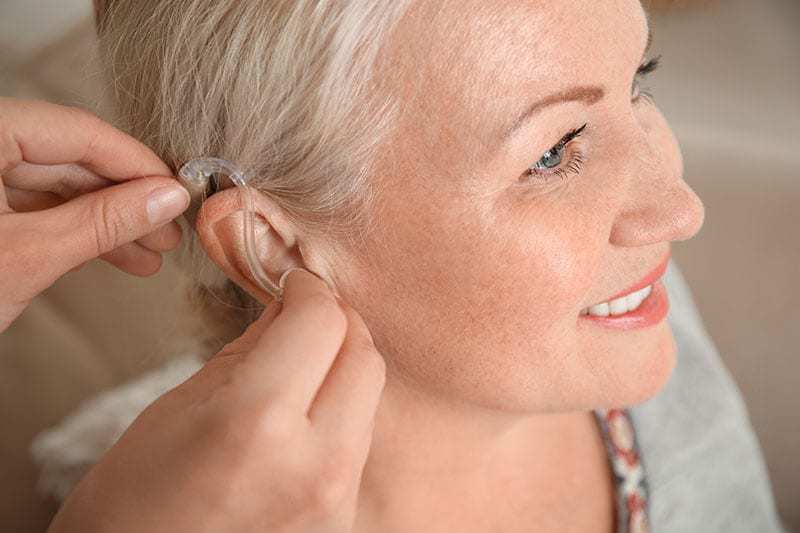Currently, millions of Americans could stand to benefit from the use of hearing aids or other advanced hearing treatments. Ordinary hearing loss (caused by advanced age or exposure to loud noises), tinnitus, hyperacusis, and other conditions are all possible reasons an individual may need to purchase hearing aids.
If you are currently suffering from hearing-related issues, then getting a hearing test and purchasing a hearing aid could be in your best interest. Today’s hearing aids, unlike those available at the turn of the new millennium, have leveraged technology to a greater extent than ever before.
In this article, we will discuss nine innovative features you’ll find in today’s hearing aids. We’ll also discuss a few things to consider when determining which hearing aid is right for you.
1. Hands-Free Technology
Due to the development of hands-free technology, your hearing aids are now able to make adjustments to changing environments entirely on their own. No matter what changes occur—the introduction of wind, increased noise, asymmetrical noises, etc.—your hearing aids will be able to filter these noises and enable you to hear at your very best.
2. Bluetooth Coordination
Bluetooth technology makes it easy to wirelessly connect digital systems in our lives, including phones, computers, portable speakers, and even hearing aids. Rather than having to hold your phone directly to your ear, you can now hear your cell phone through the hearing aid itself.
3. Tinnitus Treatment
Twenty years ago there really wasn’t anything that could be done for tinnitus (ringing in the ears). Over the past two decades, huge strides have been made in tinnitus research and treatment, and now, you can have sound therapy delivered through hearing aids. This is especially nice considering the first generation tinnitus treatment was delivered via corded devices that were not nearly as convenient to use.
4. Minimal Ear Canal Obstruction (Open Technology)
In the past, the lack of open technology would often cause hearing aids to deliver a sound that is described as “hollow” or “booming.” Today, these types of sounds can be easily avoided. Open technology, which is specifically designed to leave the ear canal mostly unobstructed, makes it much easier to experience a natural sound that is crisp and clear.
5. Automatic Feedback Cancellation
If you’ve been wearing hearing aids for very long, then you are well aware of just how annoying feedback can be. Feedback is what causes wearers of hearing aids to consistently hear a “whistling” noise. If you are suffering from tinnitus (as about 1 in 8 adults currently are), these noises can be even more annoying. Automatic feedback cancellation reduces the level of feedback you hear and, consequently, creates a much more enjoyable listening experience.
6. Customized App Programs
With easy to use apps—offered by nearly all of today’s top hearing aid manufacturers—you can now control various features of your hearing aids from your smartphone. This makes it much easier to make small adjustments to your hearing aids as you navigate through varying listening environments. If you are unfamiliar with these types of apps, your audiologist will gladly teach you how to use them.
7. Multiple Microphones
As you would find on any film or television set, the use of multiple microphones can help amplify the sounds that are meant to be heard while limiting exposure to background noise. Hearing aids are no different. With dual microphone technology, it is now much easier to hear conversations in a noisy environment or an environment where noise is coming from multiple different sources.
8. Invisible Options
One of the reasons many Americans don’t get the hearing help they need is that simply put, they do not like the way that hearing aids look. However, thanks to the development of incredibly discrete devices such as iic’s (invisible-in-the-canal) hearing aids and Lyric (100% invisible with extended wear capabilities), this is no longer a concern. This means that the only person who needs to know about your hearing aids is you.
9. Increased Levels of Personalization
Lastly, as you will discover with many technology-driven industries, the hearing aid industry has been consistently moving to increase the number of ways these devices can be personalized. Personalized hearing aids will be especially important for individuals with asymmetrical hearing issues (where one ear hears much differently than the other). After speaking with your audiologist about the origins and intensity of your current hearing issues, they’ll be able to help you find a type of hearing aid that can effectively meet your needs.
The Most Important Consideration when Purchasing Hearing Aids
Aside from making the decision and taking action to get the help needed for diminished hearing and/or tinnitus, finding the right audiologist is the most critical step. That person will perform your testing/diagnostics, help you choose the right device(s), and make adjustments throughout the process. The best technology in the world can’t make up for subpar guidance so choose wisely.
Conclusion – 9 Features of Modern Hearing Aids
Innovations in hearing technology have significantly evolved over the past decade. Currently, there are more brands, types of hearing aids, and special features to select from than ever before. If you or a loved one is suffering from hearing loss, tinnitus, hyperacusis, or other hearing health conditions, make an appointment with an audiologist at Sound Relief Hearing Center.

